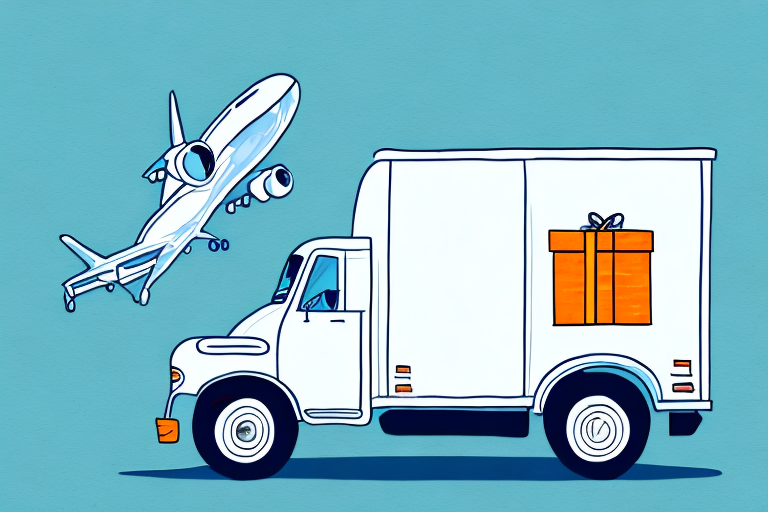Introduction to Scheduled Delivery
In the dynamic landscape of e-commerce, businesses strive to differentiate themselves and elevate the customer experience. Scheduled delivery services have emerged as a strategic solution, allowing customers to choose delivery times that best fit their schedules. This flexibility not only enhances operational efficiency but also boosts customer satisfaction and loyalty. This article explores the multifaceted benefits of scheduled delivery, examines various delivery models, and provides actionable strategies to optimize your delivery process for maximum impact.
Enhancing Business Operations with Scheduled Delivery
Boosting Operational Efficiency
Scheduled delivery enables businesses to plan and organize delivery routes more effectively. According to a Statista report, companies that implement scheduled deliveries see a 20% increase in delivery efficiency. By knowing exact delivery times, businesses can streamline their logistics, reduce missed deliveries, and optimize resource allocation.
Cost-Saving Benefits
Implementing scheduled delivery can lead to significant cost reductions. Businesses can minimize fuel consumption and labor costs by optimizing delivery routes. Additionally, offering scheduled delivery reduces the reliance on expensive express shipping options. A study by the Harvard Business Review found that companies adopting scheduled delivery models experienced a 15% decrease in overall delivery costs.
Environmental Impact
Scheduled delivery contributes to sustainability efforts by optimizing delivery routes, thereby reducing fuel consumption and carbon emissions. The Environmental Protection Agency highlights that optimized delivery schedules can lower greenhouse gas emissions by up to 10%, supporting businesses in their environmental responsibility initiatives.
Increasing Customer Satisfaction and Loyalty
Customer satisfaction is paramount in fostering loyalty and repeat business. Scheduled delivery addresses common pain points by allowing customers to receive their orders at convenient times, thereby reducing the frustration of missed deliveries. According to a Forbes article, businesses that offer flexible delivery options report a 25% increase in customer satisfaction ratings.
Personalized Customer Experience
Scheduled delivery offers a personalized touch, catering to individual customer preferences. This personalization not only enhances the shopping experience but also decreases the likelihood of returns and complaints, as customers receive their orders when it suits them best.
Optimizing Scheduled Delivery Processes
Leveraging Technology and Tools
Technology plays a critical role in optimizing scheduled delivery. Utilizing delivery management software and GPS tracking can streamline operations and improve accuracy. Tools like Route4Me offer route optimization features that enhance delivery efficiency.
Choosing the Right Delivery Service
Selecting a reliable delivery partner is essential for the success of scheduled delivery. Factors to consider include the provider’s track record, delivery speed, and flexibility. According to a Logistics Management guide, businesses should assess potential partners based on performance metrics and customer reviews to ensure alignment with their delivery objectives.
Understanding Delivery Models
There are various scheduled delivery models, each with its unique advantages. Fixed window deliveries allow customers to select specific time slots, while flexible window deliveries offer broader date ranges with notifications upon dispatch. Understanding these models helps businesses tailor their services to meet diverse customer needs.
Gaining a Competitive Edge
In a saturated market, offering scheduled delivery can distinguish your business from competitors. Providing a reliable and convenient delivery option enhances the overall customer experience, fostering loyalty and encouraging repeat purchases. A report by McKinsey & Company indicates that businesses with flexible delivery options outperform competitors in customer retention by 30%.
Overcoming Implementation Challenges
Common Challenges
Implementing scheduled delivery can present challenges such as managing precise delivery windows, ensuring route optimization, and maintaining communication with customers. Additionally, businesses may face logistical hurdles in coordinating inventory and staffing to meet scheduled demands.
Solutions and Strategies
To address these challenges, businesses can invest in advanced delivery management systems, provide comprehensive training for logistics staff, and establish clear communication channels with customers. Implementing predictive analytics can also help anticipate delivery demands and optimize resource allocation.
Best Practices for Effective Scheduled Delivery
Effective Communication
Transparent and proactive communication with customers is crucial. Providing accurate tracking information, confirming delivery times, and promptly addressing any changes or delays can significantly enhance the customer experience. Utilizing automated notification systems ensures that customers remain informed throughout the delivery process.
Measuring Success
To gauge the effectiveness of scheduled delivery, businesses should track key performance indicators (KPIs) such as delivery punctuality, customer satisfaction scores, and cost savings. Regularly analyzing these metrics allows for continuous improvement and ensures that the delivery services meet both business and customer expectations.
Future Trends in Scheduled Delivery
The landscape of scheduled delivery is evolving with advancements in technology and shifting consumer preferences. Future trends include the integration of artificial intelligence for predictive delivery scheduling, the expansion of same-day and next-day delivery options, and an increased emphasis on sustainable delivery practices. Staying abreast of these trends will enable businesses to adapt and maintain a competitive edge in the ever-changing e-commerce environment.
As sustainability becomes a core value for both businesses and consumers, the adoption of eco-friendly delivery solutions is expected to rise. Innovations such as electric delivery vehicles and optimized routing algorithms will play a pivotal role in reducing environmental impact while enhancing operational efficiency.




















